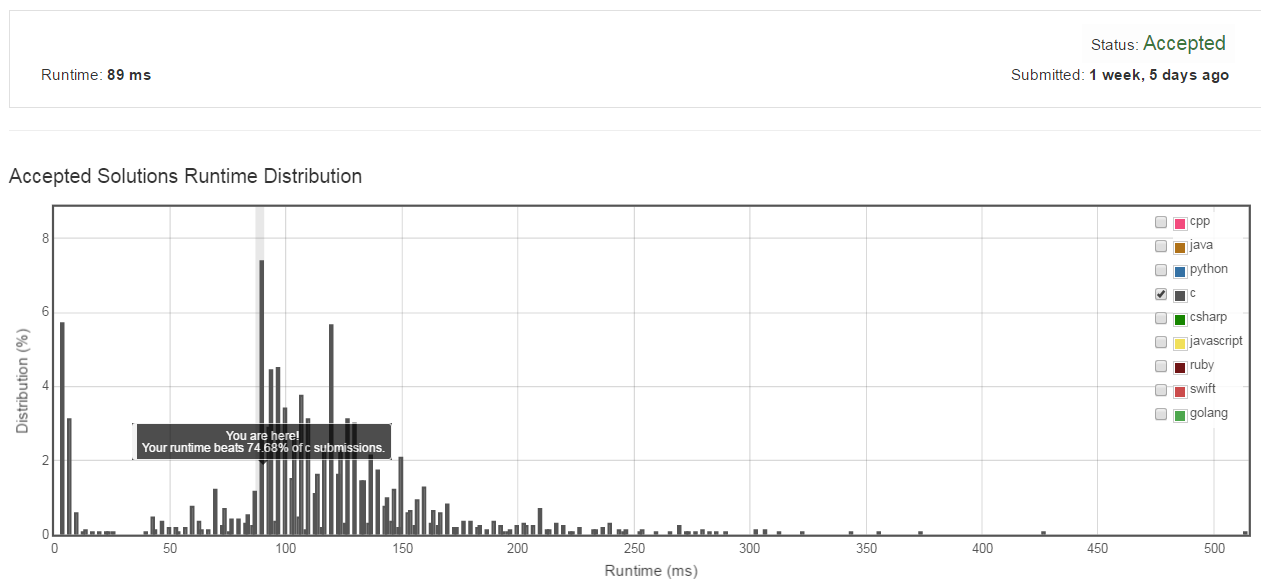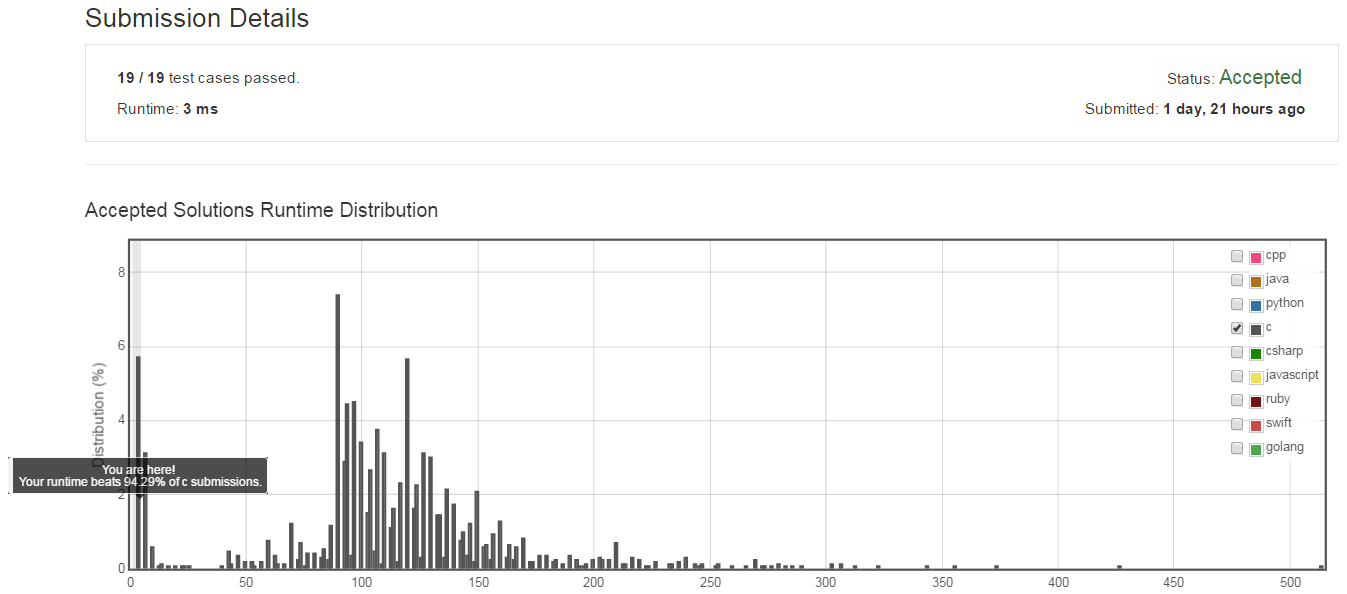Question:
Given an array of integers, return indices of the two numbers such that they add up to a specific target.
You may assume that each input would have exactly one solution, and you may not use the same element twice.
Example:
Given nums = [2, 7, 11, 15], target = 9,
Because nums[0] + nums[1] = 2 + 7 = 9,
return [0, 1].
此題主要著重在如何有效率的搜尋,這邊使用了三種解法,分別是Brute Force(暴力解),Binary Search(二分搜尋法),Hash function(雜湊函數)
假設Hash Function可以達到O(n)的複雜度,那理論上花費時間會是Brute Force > Binary Search > Hash Function,不過實際實驗起來是Brute Force > Binary Search = Hash Function,推測有可能是使用的hash function沒達到O(n)的複雜度,或是LeetCode跑的數據量不足以反應出兩種方式的差距,這部分就不深入探討了
Brute Force
暴力解即是從nums[0]開始往後找是否有數字相加之後可以得到target,如果沒有那就看num[1]接著一樣往後找是否有數字相加之後可以得到target,以此類推,直到找到正確的組合
1 | int* twoSum(int* nums, int numsSize, int target) |
程式就是兩層迴圈,分別兩個兩個相加看是不是要的結果
這裡要注意的是第二層的迴圈在找第二個數字時不用從0開始找,從i+1開始找即可,因為i+1之前的會是已經搜尋過的,例如目前已經搜尋到i = 3那j = 0, 1, 2的狀況分別在之前i = 0 j =3, i = 1 j = 3, i = 2 j = 3時都已經運算過了
放到leet code上執行的結果為89ms,超過74.68%的上傳程式

Binary Search
二分搜尋法可以將搜尋的複雜度降低成O(logn),不過需先經過排序,排序方式可以使用standard C有支援的qsort
1 | int compare(const void *a, const void *b) |
(1)首先我們先使用qsort且為由小到大進行排序,因為題目要的答案是數字的位址,而不是數字的值,因此我們不行直接將input的數字串作排序,不然會不知道原本的位址,我們另外令一個一樣大小的陣列,接著memcpy過去,然後將這個陣列作qsort排序
(2)接著一樣找各種配對,不過是使用binary search的方式,而在輸入參數的部分和暴力解一樣,找過的可以不用再找,因此可以看到pCurr_val++且搜尋的大小也可以不斷遞減numsSize - i - 1
(3)最後我們必須從最原始的陣列找出經由binary search找到的兩個數字的位址在哪
放到leet code上執行的結果為3ms明顯低於暴力解方式,超過94.29%的上傳程式

Hash function
Hash function理想狀況可以將複雜度降至趨近於O(n),這裡使用的是Paul Hsieh的SuperFastHash,相關src code可自行搜尋,不過這邊的程式碼有經過稍微的修改,因為這裡只需要放置integer,因此改成輸入int,且不用輸入size,並且排除掉非4byte倍數長度的情形
1 |
|
(1)pHash_table挖了一塊HASH_TABLE_NUM(256) * numsize的陣列作為hash table使用,使用了256個index來存數字,當然這塊記憶體可能會浪費掉很多空間,不過至少足以保證所有的數字都可以裝的進去,在不考慮記憶體使用空間情況下,可以直接這樣用
(2)接著我們將數字經過hash function運算之後放進hash table裡面,另外使用sum來記錄每個hash table的index裡面放了幾個數字
(3)再來使用hash function來找尋是否有需要的兩個值,這裡要對一個情況作額外的處理,如果有一個target = 6且答案為3+3的狀況,這時我們在hash table找值時必須找到兩次3才算真的符合,因為當你固定其中一個3要去找另外一個3時,會從hash table先找到自己的3,如果找不到另一個3就代表輸入的數列只有一個3
(4)最後從原始的輸入陣列找到兩個值的位址
放到leet code上執行的結果為3ms明顯低於暴力解方式和binary search速度相當,超過94.29%的上傳程式